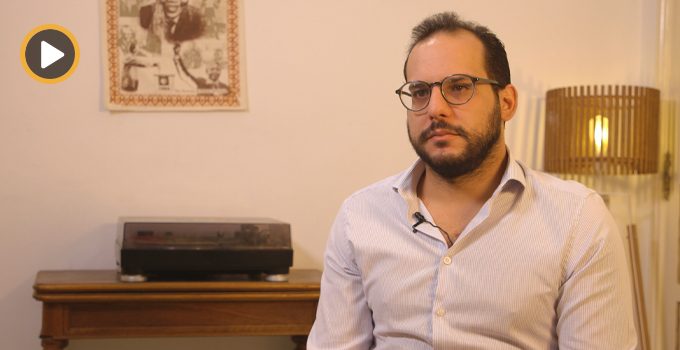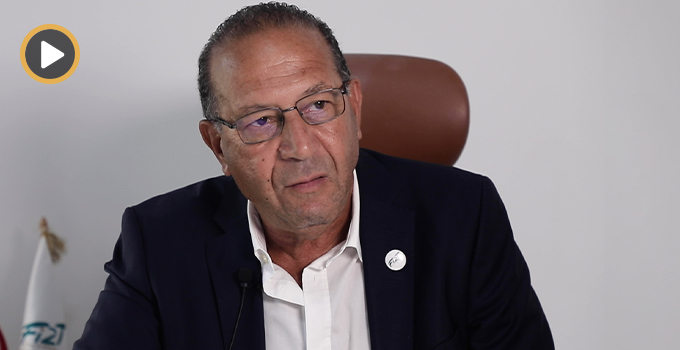Why is Tunisia “lagging behind” Morocco in solar energy production?
News coverage of the Ouarzazate solar plant in Morocco has painted the operation as a symbolic and auspicious shift in production and consumption of renewable energies. Asked why Tunisia seems to be lagging behind its Maghreb neighbor in the sector, Minister of Industry, Energy, and Mines Mongi Marzouk explained that “Today, we have a long way to go with only 3% of production from renewable energies of which the majority is wind and a small amount of sun.” Since new legislation in the energy sector has been passed–in April 2015, the ARP adopted law n°2015-12 concerning the production of electricity from renewable energies—Tunisia intends to increase this percentage: “Between now and 2020,” the Minister predicted, “STEG will produce between 200 and 250 megawatts thanks to solar and wind energy.”

Investing in Tunisia’s solar energy to meet Europe’s energy demands
The Minister’s numbers are indeed well below the target–1000 megawatts for 2016—set by the Tunisian Solar Plan (PST) in 2009. Adopted one year after the Union of the Mediterranean set out to support solar energy production in North Africa for export to Europe through the Mediterranean Solar Plan (PSM), the Tunisia’s National Agency of Energy Conservation (ANME) presented the PST as a “lever of industrial and social development, and to turn Tunisia into an exportation pole of clean electricity,” and is furthermore a “dynamic plan which will evolve according to investment possibilities and business opportunities.”
Within this context, European—and particularly German—technical and financial support for Tunisia’s renewable energies sector have poured in with assistance from governmental institutions, development agencies, and private companies. The flagship endeavor of Tunisian-German cooperation in this vein is the DESERTEC Foundation’s TuNur project which set out to create “the first utility-scale solar export project between Tunisia and Europe.” Although Desertec, which also has projects in Morocco and Algeria, is largely regarded to be a failed initiative, the Desertec Foundation has continued ahead with the TuNur goal to “illuminate European households” with electricity sourced from Tunisian solar energy.
More recently, on June 16 the Tunisian Ministry of Industry’s newly-launched Open Data website published a piece on the construction of a 10 megawatt photovoltaic plant in Tozeur. The first of Tunisian Company of Electricity and Gas (STEG) endeavors towards the PST objective of 67 megawatts of solar energy by 2020 is financed by the German development bank KfW. An estimated global cost of 17.5 million euros is to be financed by the bank in the form of a “low-rate subsidized loan not exceeding 2% and for a duration of 12 years including a 5-year grace period.”
Public-private partnerships in renewable energies
In terms of Tunisia-Germany commercial relations and energy partnership, the Tunisian Solar Plan is a marketable asset for potential German investors. In February, the Tunisian-German Chamber of Commerce, or AHK, hosted a workshop on the role of public-private partnerships in the National Strategy for Energy Transition in which “the emphasis was most notably on the potential of PPP for Tunisian and German businesses” in light of the recent adoption of of laws n°2015-12 and n°2015-49 concerning renewable energies and PPP respectively. A presentation by Fethi El Hanchi of ANME prescribed the immediate “signing of a program contract” and the “implementation of investment work,” although, as the AHK confirmed recently to Nawaat, prospective contracts are still awaiting the promulgation of decrees under law n°2015-12. During the same event, the Presidency’s Director General of PPP Atef Majdoud characterized the legal framework and varieties of public-private partnership contracts in Tunisia, while Mourad Melki of the Swiss solar company Solstis advocated for a power purchase agreement (PPA) of 20 years with STEG. As a case for comparison, Melki pointed to Morocco’s solar project in Ouarzazate.
Beyond the marketing spin on solar energy
Several analyses by researcher Hamza Hamouchene deconstruct dominant narratives around the production and exploitation of renewable energies in North Africa by taking account of their political and socio-environmental dimensions. In March 2016, Hamouchene challenged mainstream accounts of Morocco’s Noor-Ouarzazate complex, the world’s largest concentrated solar power plant. “There is no surprise regarding the international financial institutions’ (IFIs) strong support for this high-cost and capital-intensive project, as Morocco boasts one of the most neoliberal(ized) economies in the region.” The Ouarzazate project is to be constructed and operated through a PPP with Saudi-Arabian company ACWA Power which will sell the plant to Morocco’s National Electricity and Potable Water Bureau (ONEE) over a 20 to 30 year period. Hamouchene’s observations about such contracts in Morocco—which boil down to the “privatization of profits and nationalization of losses”—resonate with concerns in Tunisia about the country’s economic and political autonomy in the scope of foreign “support” for democratic transition and reform.





iThere are no comments
Add yours